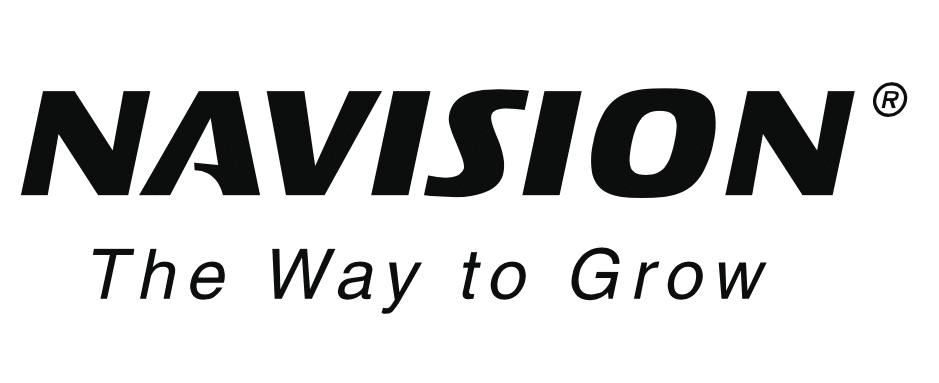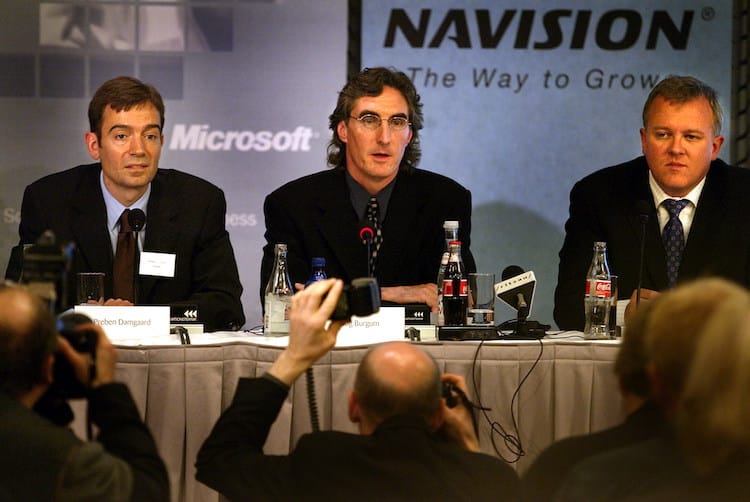Celebrating the 20th anniversary of the acquisition.
Microsoft had made an offer to purchase the Danish technology company Navision. The Americans were ready to pay over 10 billion kroner ($1.4B) to fulfill their ambition of gaining a significant position in the global market for ERP (Enterprise Resource Planning) software to SMBs.
It was the big news in the early summer of 2002.
A light in the darkness
Following the burst of the dot-com bubble in the first half of 2000, Navision was a small miracle in an industry that was severely battered. The company employed just over 1,200 employees, had a turnover of close to two billion kroner ($300M) and had a bottom line of 400 million kroner ($60M). It had 2,000 value-added resellers, more than 100,000 customers and was active in 30 countries.

The news of the acquisition was not received equally positively everywhere. Many were sad that yet another successful Danish company should fall into foreign hands. That pattern repeated itself too often. Smart Danes turned a good idea into a blooming business, after which cash-rich Americans bought it and moved the best jobs elsewhere.
It happened to Navision too, but what were the alternatives?
A successful merger
In November 2000, the companies Damgaard and Navision Software announced that they wanted to merge. The two companies did essentially the same thing and used the same channel-based business model. Together, they could save considerable administrative costs internally, and externally they would stand much stronger. The distance between the companies’ head offices, which were in Birkerød and Vedbæk, was less than 15 kilometres. The synergy benefits would be easy to harvest.
On the exact same day that the board of directors of the newly merged company held its inaugural meeting, Microsoft announced that it wanted to enter the market for ERP software. For a start, it had purchased Great Plains. The move completely changed the competitive situation. When Microsoft, less than six months later, unofficially said that they were interested in also buying Navision, the latter was left with two options: To get Microsoft with them or against them.
The owners, who also were in the top management, favoured the first alternative.
Bill Gates and 9/11 got in the way
The acquisition initially fell through. Bill Gates thought it was a bad idea, which dragged out the negotiations. When terrorists flew into The World Trade Center in New York City on September 11, 2001, the project was unceremoniously cancelled.
Microsoft’s inquiry took Navision’s board of directors by surprise. They had not established a solid strategic alternative. They learned from the mistake, so when Microsoft approached them again in the spring of 2002, they were much better prepared. Therefore, the negotiations, which naturally had plenty of dramatic elements, could be completed relatively quickly.

On 7 May 2002, the world press was informed, and on August 22 of the same year, Navision’s shares were delisted on the Copenhagen Stock Exchange. At the same time, Microsoft downgraded the firm from a limited liability company (aktieselskab) to a private limited company (anpartsselskab).
The perfect role model
Navision remains an excellent showcase of how to bootstrap and grow a successful global company from a base in a small non-English-speaking country.
The foundation was a suite of excellent products for a very broad market. The sales model was (almost) exclusively indirect, where the products enabled an unusually high degree of value creation for partners. When a reseller sold and implemented a solution, only 10% of the project was software from Navision. The other 90% were services and software, where the resellers had the entire margin.
It is worth noting that for the first 16 years, Navision was two different companies. Damgaard, which until the IPO in 1999 was called Damgaard Data, was founded and run by Erik and Preben Damgaard. PC&C, which changed its name to Navision Software in 1995, was founded by Jesper Balser, Peter Bang, and Torben Vind. The two companies, which made the same type of products, for the same market and used the same sales model, were very different.

Culturally, they were almost opposites of each other.
Navision Software was academically thorough, careful, and meticulous. The decision-making structure in their global setup was highly decentralized. Damgaard was innovative, bold, and risk-averse. Their decision-making structure was centralized. Navision was big abroad. Damgaard was the market leader in Denmark.
The different cultures attracted different types of people, and the employees of the two companies loved their workplaces. This created major challenges in the merger, but the construction with two co-CEOs, Preben Damgaard and Jesper Balser, one from each camp, was the glue that held it all together. According to management textbooks, such an arrangement should be avoided, but in real life, there are always exceptions to the rule.
Navision managed to show impressive results before Microsoft offered billions.
Read more in the business biography From Damgaard to Microsoft, which describes in detail the development of the two companies from 1984 to Microsoft’s purchase in 2002.
This article was first posted on Techsavvy in Danish.
